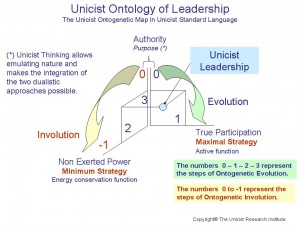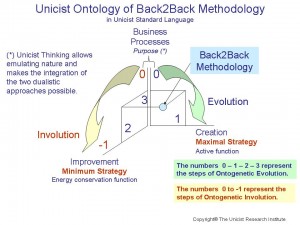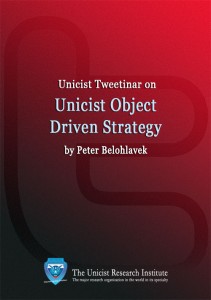Tweetinar: The Ontogenetic Map (DNA) of Leadership on 9.27.11
The unicist ontogenetic map of leadership allows understanding the type of leadership necessary to manage a specific activity in an existing environment.
 On September 27 at 4:00 pm New York time there will be a Unicist Tweetinar on The Ontogenetic Map of Leadership (DNA) led by Diana Belohlavek.
On September 27 at 4:00 pm New York time there will be a Unicist Tweetinar on The Ontogenetic Map of Leadership (DNA) led by Diana Belohlavek.
Register at:
www.twitter.com/tweetinar_en
Influential leaders are doers in their field. They may be artists, football players, businessmen / women, politicians or whatsoever. Their common characteristic is that leaders need to make things happen.
The Unicist Ontology of Leadership describes the ontogenetic map that defines the natural way an individual is able to exert leadership maximizing results and minimizing conflicts.
The Unicist Standard for leadership is based on establishing procedures to foster a leadership style that is functional to the goals that need to be achieved. Essentially, leadership implies the integration of authority, participation and power. This is self evident.
The questions that will be answered during the Unicist Tweetinar are:
- What is the benefit of managing the ontogenetic map of leadership?
- Why does the knowledge of the DNA of leadership help to build the authority of the leader?
- How can organizational consensus be managed?
- Does participation expand the power of leadership?
- What is a democratic leadership in hierarchical organizations?
- When is it necessary to exert a non-democratic leadership?
- What is the implication of reverted leadership?
We recommend watching the video on this subject in order to find your responses to these questions:
We invite you to be our guest at the Unicist Library to access the collection of books on Unicist Business Architecture: http://www.unicist.com
N. I. Brown
Academic Department
NOTE: The Unicist Research Institute is a pioneer in complexity science research. More than 4,000 unicist ontological researches were developed since 1976 until July 2011 in the field of individual, institutional and social evolution. They included the development of the unicist ontogenetic maps (DNA) of institutions.







